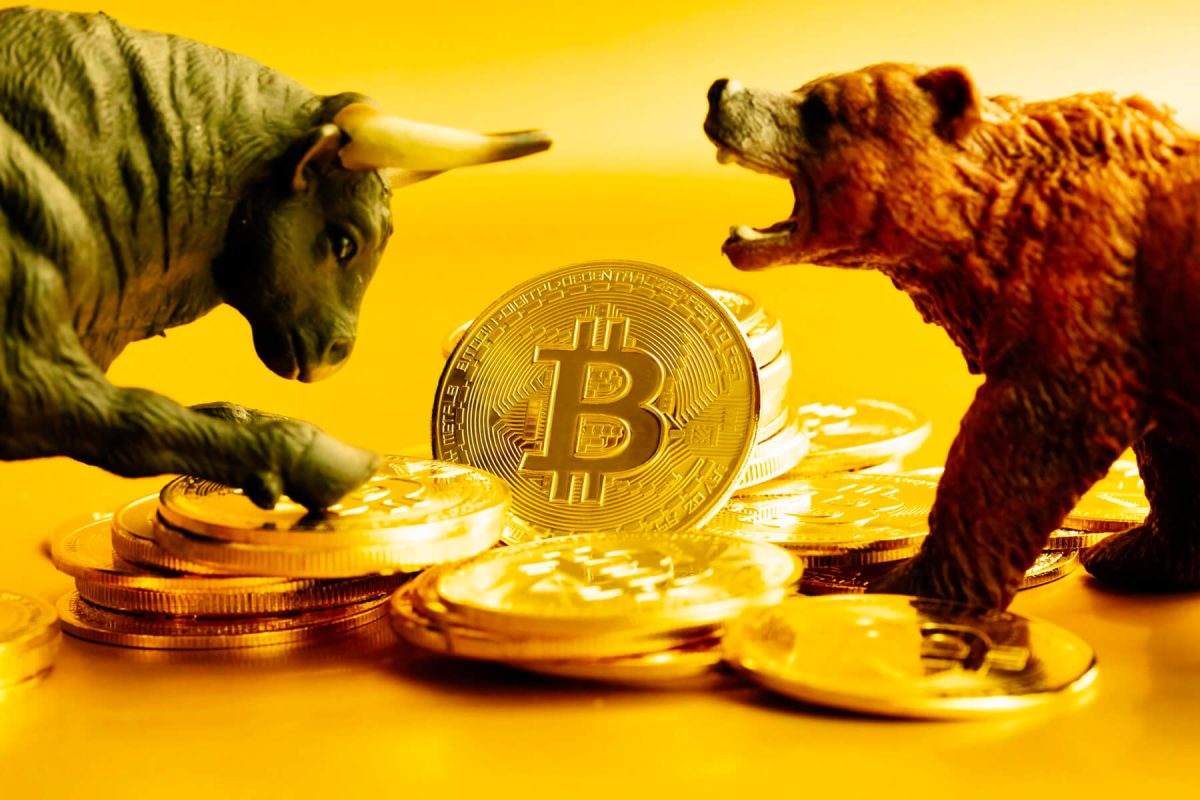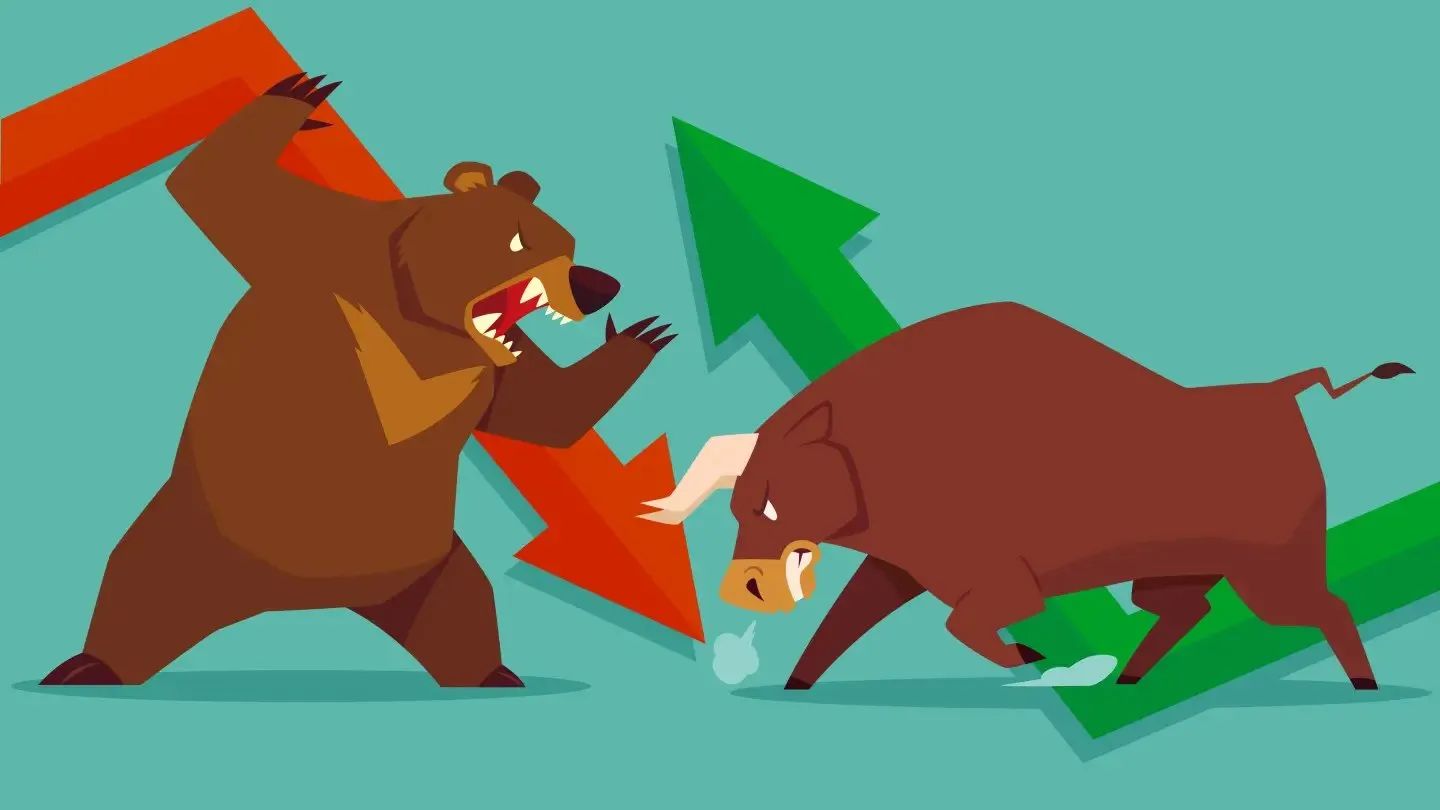Bull Market and Bear Market in Crypto Understanding the Differences

The world of financial trading is characterized by two primary phases that encapsulate the overall sentiment and behavior of participants. These phases can significantly influence strategies and outcomes for those engaged in asset trading. Grasping the essence of these contrasting periods is crucial for anyone looking to navigate the complex landscape of trading.
One phase is marked by optimism and rising values, where enthusiasm drives participants to acquire assets with expectations of future gains. The other phase stands in stark contrast, defined by pessimism and declining values, where trepidation prompts traders to sell off assets, often in a bid to avert further losses. Understanding these two states not only aids in making informed decisions but also helps in developing a robust trading strategy.
As potential participants delve into the intricacies of investing, recognizing the signs of each phase can greatly enhance their ability to optimize their trading practices. Developing insights into the underlying characteristics of each state paves the way for more strategic engagement with one’s financial endeavors, enabling a more informed and calculated approach to asset management.
Bull Market Characteristics in Crypto
In any financial environment, certain distinctive features characterize periods of increasing asset values. Understanding these attributes can help participants navigate their endeavors more effectively.
- Rising Prices: One of the most apparent traits is the consistent upward trajectory of asset prices, often leading to investor optimism.
- Increased Trading Volume: High levels of activity and participation in transactions often accompany these phases, reflecting heightened interest and confidence among traders.
- Positive Market Sentiment: General optimism prevails, influencing perceptions and encouraging more individuals to enter the space.
- New Participants: As enthusiasm builds, more newcomers often join the fray, contributing fresh capital and diversifying the investment mix.
- Institutional Interest: The involvement of larger financial entities frequently becomes evident, lending credibility and further propelling prices.
- Innovations and Developments: During such thriving times, new projects and technologies often emerge, reflecting the dynamic nature of the ecosystem.
- Higher Volatility: While overall trends move upward, significant price fluctuations can still occur, often attracting speculative trading strategies.
Recognizing these features allows participants to better strategize their approaches and make informed decisions amidst the prevailing excitement.

Bear Market Traits Investors Should Know
Understanding the characteristics of a declining phase in the financial landscape is essential for participants looking to navigate through turbulent times. Recognizing these traits can help individuals make informed decisions and adapt their strategies to mitigate potential losses while positioning themselves for recovery.
| Traits | Description |
|---|---|
| Decreased Prices | Assets often experience a significant drop in value, leading to widespread apprehension among traders. |
| Negative Sentiment | Investor confidence wanes, resulting in a prevailing atmosphere of pessimism that can perpetuate declines. |
| High Volatility | Price fluctuations become more pronounced, making it challenging to predict short-term movements accurately. |
| Increased Volume | Trading activity may surge as participants rush to exit their positions or capitalize on opportunities. |
| Longer Recovery Periods | Post-decline, it often takes a considerable amount of time for values to stabilize and regain lost ground. |
By familiarizing themselves with these attributes, participants can better navigate the complexities of unfavorable conditions, enhancing their likelihood of success in the long run.
Key Indicators of Market Sentiment
Understanding the prevailing attitude of participants in the trading environment is crucial for making informed decisions. Several indicators can help gauge the emotional state of the crowd, aiding in predicting potential shifts in price direction. Recognizing these markers allows one to navigate the complexities of investment landscapes more effectively.
Common Sentiment Metrics
- Fear and Greed Index: This widely used tool highlights the emotional climate by combining various factors, including volatility, market momentum, and social media trends.
- Volume Analysis: Changes in trading volume often signal shifts in enthusiasm. A spike in transactions can indicate strong interest, while low activity may suggest uncertainty.
- Social Media Activity: Monitoring platforms like Twitter or Reddit can provide insights into public opinion, with increased mentions often correlating with rising interest.
Technical Indicators
- Relative Strength Index (RSI): This momentum oscillator measures the speed and change of price movements to identify potential overbought or oversold conditions.
- Moving Averages: By analyzing short-term and long-term moving averages, one can discern trends that reflect collective behavior.
- Market Sentiment Surveys: Polling traders and analysts about their outlook can reveal prevailing sentiments and help anticipate future movements.
Strategies for Bullish Investment Approaches
When the atmosphere is favorable for growth, adopting the right methods can significantly enhance returns. Savvy participants often capitalize on rising sentiment by employing various tactics that align with upward trends. These approaches can be categorized into several actionable strategies that focus on maximizing potential gains while managing risks.

Long-Term Holding
One of the simplest yet effective strategies involves acquiring assets and holding them over an extended period. This technique is based on the belief that value will appreciate in the long run. By resisting the urge to sell during fluctuations, stakeholders can benefit from compound growth and avoid short-term volatility.
Dollar-Cost Averaging
This method helps mitigate the impact of price swings by investing a fixed sum at regular intervals, regardless of the asset’s price. This approach allows participants to accumulate more units when prices are lower and fewer when prices are higher, resulting in an averaged purchase cost that can enhance overall returns.
| Strategy | Benefits | Considerations |
|---|---|---|
| Long-Term Holding | Potential for significant appreciation | Requires patience and risk tolerance |
| Dollar-Cost Averaging | Reduces impact of volatility | May miss out on larger profit opportunities |
Preparedness for Bearish Market Trends
Understanding how to navigate challenging financial conditions is vital for anyone involved in trading or asset acquisition. When the overall sentiment shifts towards pessimism, having a well-structured approach can safeguard your holdings and enhance your chances of recovery. This section will focus on strategies and mindsets that can be beneficial during downturns, ensuring that you remain resilient in the face of adversity.
Diversification and Risk Management
One of the most effective ways to prepare for declines in the financial environment is through diversification. By spreading investments across various asset classes, you can mitigate the impact of adverse price movements. Additionally, employing risk management techniques, such as setting stop-loss orders, can help limit losses and protect your capital. This proactive approach fosters a stable investment portfolio capable of weathering fluctuations.
Continuous Learning and Adaptation
Staying informed and adaptable is crucial when conditions shift negatively. Engaging in ongoing education regarding market trends, economic indicators, and technological advancements will empower you to make astute decisions. Embrace flexibility in your strategies and be open to adjusting your methods based on fresh insights and evolving circumstances. This dedication to learning not only enhances your resilience but also positions you for future success.
Impact of Market Cycles on Trading
Understanding the various phases of financial landscapes is essential for making informed trading decisions. Each phase presents unique opportunities and challenges that can influence strategies and outcomes. By recognizing these cycles, traders can better align their approaches with prevailing trends to optimize returns.
Phases of Financial Landscapes
The financial environment typically moves through several distinct stages, each characterized by specific behaviors and sentiments. These stages include:
- Initial Phase: Often marked by hesitation and skepticism, where confidence starts to build.
- Growth Phase: Increased optimism leads to rising values and greater trading volumes.
- Maturation Stage: Prices reach new heights, but volatility can increase as participants begin to take profits.
- Declining Phase: Deterioration in sentiment may result in falling prices and reduced activity.

Strategic Adjustments for Traders
Adapting to the cyclical nature of financial environments requires a flexible approach. Traders often implement various strategies based on the current stage, including:
- Trend Following: Identifying and capitalizing on upward momentum during growth periods.
- Contrarian Approaches: Seeking opportunities during shakes, potentially buying undervalued assets.
- Risk Management: Employing stop-loss orders and diversification to mitigate losses in declining scenarios.
By recognizing and responding to these fluctuations, traders can enhance their ability to seize profitable chances while minimizing risks associated with unpredictable shifts.
Q&A: Bull vs Bear Crypto Market – Differences
What is a bull market in the context of cryptocurrency?
A bull market in cryptocurrency refers to a period where the prices of cryptocurrencies are rising or are expected to rise. Typically characterized by strong investor confidence, a bullish market sees increasing demand for cryptocurrencies, leading to higher prices over a sustained period. During this phase, many investors may choose to buy in anticipation of further price increases, often leading to a cycle of optimism and growth in trading volumes. Bull markets can be driven by factors such as positive news in the cryptocurrency space, regulatory acceptance, technological advancements, or broader economic trends. Investors often feel more willing to invest substantial amounts of money during this phase due to the perceived lower risk.
How can investors identify a bear market in cryptocurrencies?
A bear market in cryptocurrencies is identified by a prolonged period of declining prices, generally characterized by a market drop of 20% or more from recent highs. Investors may notice that there is a pervasive sense of pessimism and lack of confidence in the market during a bear phase. This decline can be triggered by negative news, regulatory crackdowns, technological failures, or macroeconomic factors that cause overall market distress. Investors often exhibit reluctance to purchase cryptocurrencies in a bear market, leading to lower trading volumes and further price drops. Key indicators include consistent lower highs and lower lows on price charts, as well as bearish sentiment on social media and investment forums. Recognizing these signs can help investors mitigate losses by making informed decisions on when to sell or hold their assets.
What strategies should investors consider during a bull market?
During a bull market, investors may adopt various strategies to maximize their returns. Firstly, ‘buy and hold’ can be a popular approach, where investors purchase promising cryptocurrencies and keep them for an extended period, hoping to benefit from rising prices. Additionally, dollar-cost averaging—investing a fixed amount regularly—can help reduce the impact of price volatility. Some investors may also engage in ‘trading the trend,’ where they capitalize on short-term price movements by buying when prices are low and selling when they peak. Leveraging social sentiment and market news can provide insights into the best opportunities during a bull market. However, it’s essential to avoid FOMO (Fear of Missing Out) and conduct thorough research to mitigate potential risks. Adjusting risk exposure and diversifying one’s portfolio can also be beneficial to cushion against unforeseen market pullbacks.
What are the potential risks investors face in a bear market?
Investors in a bear market face several potential risks, primarily associated with significant losses. As prices decline, the value of their investments may diminish, leading to a negative sentiment that can exacerbate the situation. Panic selling can occur, as investors rush to liquidate their assets to avoid further losses, causing prices to plummet even more. Another risk is the psychological effect; fear and pessimism can cloud judgment, leading to poor decision-making when it comes to buying or holding assets. Additionally, during prolonged bear markets, liquidity may dry up, meaning investors might struggle to sell without impacting market prices further. It’s critical for investors to recognize market conditions and adjust their strategies accordingly, either by reducing exposure, using stop-loss orders, or considering alternative investment vehicles during downturns.
Can you explain how macroeconomic factors influence bull and bear markets in crypto?
Macroeconomic factors play a crucial role in influencing both bull and bear markets in the cryptocurrency space. Economic indicators such as inflation rates, interest rates, and overall economic growth can greatly affect investor sentiment and confidence. For instance, in times of low interest rates and high liquidity, investors are more likely to seek higher-yielding assets like cryptocurrencies, potentially fueling a bull market. Conversely, during periods of high inflation or economic downturns, fear and uncertainty can lead to bearish sentiment, causing investors to retreat to safer assets. Additionally, geopolitical events and monetary policy decisions can impact the flow of investment into the crypto market. Regulatory changes can also create waves; for example, favorable regulations might spur bullish behavior, while unfavorable ones can instigate bear markets. Understanding these broader economic influences can help investors make more informed decisions about timing and positioning in either market phase.
What are the main characteristics that define a bull market in cryptocurrency?
A bull market in cryptocurrency is characterized by a prolonged period of rising prices, optimism among investors, and an overall increase in trading volume. Typically, a bull market occurs when the majority of market participants believe that prices will continue to rise, leading to more investments and heightened interest. During this phase, major cryptocurrencies often see significant gains, and innovative projects may attract attention and funding. Investor confidence tends to be high, and positive news narratives surrounding cryptocurrencies can contribute to the bullish sentiment. Overall, a bull market signifies a thriving environment for both seasoned and new investors looking to profit from upward trends in the crypto space.
What is the difference between a bull market and a bear market in cryptocurrency?
A bull market in cryptocurrency is characterized by rising prices, growing investor confidence, and an overall positive market sentiment. In contrast, a bear market describes a period of declining prices, increased uncertainty, and negative sentiment among investors. Crypto bull markets tend to attract more investors, while bear markets often lead to increased volatility and market corrections.
How do crypto investors respond to a crypto bull run?
During a crypto bull run, crypto investors typically seek to capitalize on rising prices by purchasing more crypto assets, anticipating further gains. As prices increase, investor sentiment becomes more optimistic, often leading to higher market cap and increased trading volume. However, some investors may also look to take profits and exit positions during a bull run to secure gains.
What is a crypto bear market, and how does it affect cryptocurrency prices?
A crypto bear market is marked by a prolonged period of declining cryptocurrency prices, often accompanied by market pessimism and reduced investor confidence. During a bear market, the total crypto market cap may shrink, and crypto assets often experience downward pressure in value. Bear markets are typically seen as a time of accumulation for long-term investors, as they wait for a potential market reversal.
How do traditional financial markets influence the crypto market during bull and bear markets?
Traditional financial markets, such as stock markets, can have a significant impact on the cryptocurrency market during both bull and bear markets. When stock markets are performing well, it often boosts investor confidence, leading to positive sentiment in the crypto market. Conversely, when traditional markets experience declines or bear runs, the crypto market may follow suit, experiencing downturns and volatility.
What factors contribute to the end of a bull market in crypto?
The end of a bull market in crypto is often triggered by various factors, including market corrections, changes in investor sentiment, regulatory shifts, or external economic factors. Crypto markets typically experience cycles of bull runs followed by bear markets, and the end of a bull market can be marked by a sudden drop in prices, followed by a prolonged period of market consolidation or decline.










